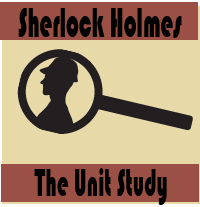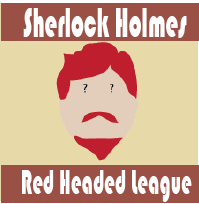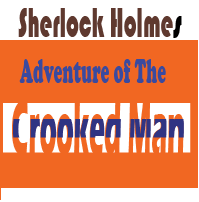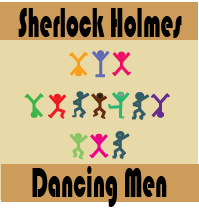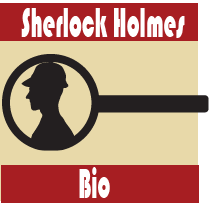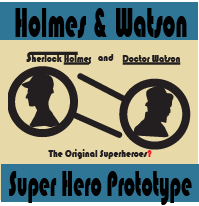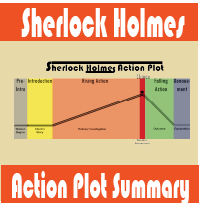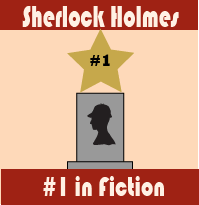Analysis of The Crooked Man
The Adventure of the Crooked Man analysis: by hook or crook Sherlock solves the case. Find out how Sherlock, Watson, and Doyle changed the rules of the game in THIS mystery.

- Analysis of the characters
- Assessment of the unique use of POV (point of view)
- Analysis of the change in the plot structure
- Type of Detective Story we have here
- Literary Features in the story
- Fun facts and Background Information
- Vocabulary Word List and Definitions
About This Unit Study
The information below is taken from Sherlock Holmes: The Unit Study. Within the unit study, information is presented in short activities without the answers.Before reading the story, students were asked to do two things in their reading:
- Determine who the "crooked man" was.
- Note anything unusual about the point of view.
Opening: A Baker Street Opening That's Not On Baker Street
Doyle used three main types of openings in his Pre-Introduction. In this particular tale, we start with a "Baker Street Scene," which is one of his more action-oriented openings. The only problem with this designation: it wasn't on Baker Street. Sherlock arrived unannounced at Watson’s new abode and startles the good doctor with one of his Unexpected Intrustions. Doyle used common patterns but mixes them up a bit.Let's Meet the Characters
A Look At Sherlock

His eyes kindled and a slight flush sprang into his thin cheeks. For an instant the veil had lifted upon his keen, intense nature but for an instant only. When I glanced agin his face had resumed that red-Indian composure which had made so many regard him as a machine rather than a man.(The unit study does address racial stereotypes which Doyle occasionally - as in the passage above - throws in.)
The character of Sherlock in this story is largely in keeping with the detective previously revealed: a man consumed with logic and justice. At the end, when he decides not to report the true nature of Barclay's death, we get a glimpse into how he balances the letter of the law with the finer points of fairness to mankind.
A Look At Watson

Once again Sherlock solves the daunting mystery all by himself. Or almost all by himself. He did 5/6 of the investigationn by himself before he even consulted Watson. So why did he decide to bring Watson at the end?
Watson serves a unique purpose as a character and as a literary device. As a character, he is Sherlock's side kick. Sherlock needs his faithful sounding board in order to think through the twists and turns of the complicated cases.
If Sherlock Holmes was talking in the forest and Watson wasn't there to listen, would he get it right?
But as a literary device Watson has a role beneficial to the reader: he is our eyes and ears. And, in this story, this literary device in the shape of the humble Dr. Watson is a bit different.
Watson's Role
Sherlock explains his role for Watson:
Sherlock: So now, my dear fellow, you see exactly how we stand and why it is I want you....(Henry) is the only person in this world who can tell us exactly what happened in that room.
Watson: And you intend to ask him?
Sherlock: Most certainly - but in the presence of a witness.
Watson: And I am the witness?
Sherlock reveals to Watson his reason for calling upon his old friend in the middle of the night: he needed a witness who could appear in a court of law to testify about the confession Sherlock was about to force from the lips of Henry Wood. If you have read the story, you know that the confession ended up much different than one Sherlock expected.
A Look At Henry Wood
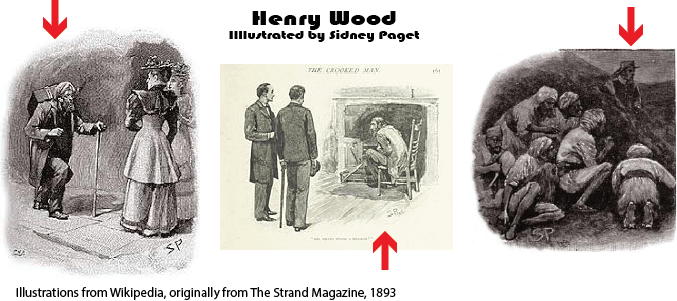
Mr. Wood began his military career as a strong and good looking man with a promising future and a possible bride.
However, he first appears to us as a broken and twisted man with little time left on this earth.
It is his own narrative of his life that solves the missing the piece in this puzzle. He has - quite literally - the missing key (which is a apt symbol in this story.)
A Look At Colonel James Barclay
He was a killer who seemed to get away with his crime; but his crime came back to haunt him. But how bad of a man was James Barclay?The inference in the story is that Barclay’s depressed and gloomy moods over-took him because he felt remorse for his deed. Would a truly evil person become depressed for 30 years for that?
Wood reported seeing death written on Barclay’s face and it was reported that his face was contorted with horror even after death.
What do you think killed Barclay?
- The knowledge that Wood survived and might want revenge?
- The knowledge that his secret sin was known to Nancy and others?
- Seeing Wood’s condition and knowing he was responsible for ruining a man’s life?
Sherlock's Silence
Sherlock chose not to report the events he learned from Henry Wood and to not tarnish the colonel’s reputation in the process. Was that the right decision? Here are some things to consider.- Did Barclay deserve to have his reputation tarnished? (I think YES.)
- Would Nancy Barclay or Henry Wood want the publicity? (Likely not.)
- Could Sherlock be certain everything Heny said was true? Would it be possible to verify the information thirty years after the fact?
Point Of View
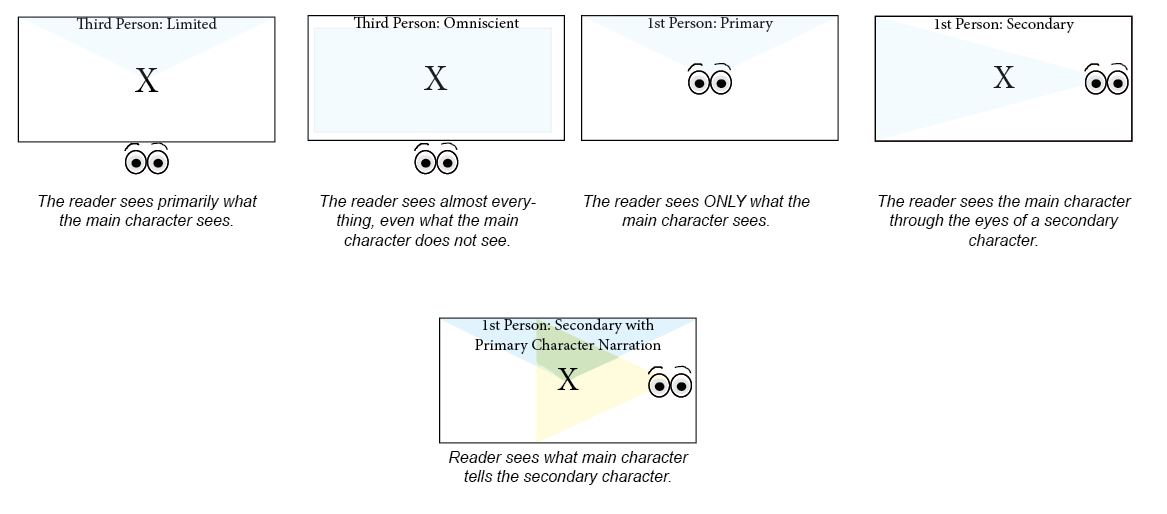
In The Adventure of the Crooked Man Doyle applies a different technique. Notice the eyeballs above: they represent what the reader sees. With first person secondary we are watching the main character.
But in this tale, Sherlock narrates to Watson much of his investigation (5/6th of it, to be exact.) This is different from other stories where the reader and Watson observe Holmes. We now hear Sherlock and know what he is thinking (rather than watching him and be kept in the dark about his thoughts.) In the bottom diagram, you see the intersection of the blue (what the main character sees) and the yellow (what the secondary character sees.) Holmes' narration of his investigation is the green section.
Holmes has completed 5/6th of his investigation. Before he ever knocked on Watson's door late in the evening he had already:
- Interviewed the officers in the regiment
- Interviewed the Barclays' servants
- Examined the room where the death occured AND looked at the body
- Inteviewed Miss Morrison (Mrs. Barclay's companion)
- Interviewed Henry Wood's landlady
Change in Plot Structure
One would be tempted to ask, "Why even bother including Watson (and we the readers) at this late stage in the investigation?"The answer, as revealed above, is that Watson is the witness. That suffices for the story-line. From a literary point of view, Watson's limited role is a method of controlling the narration.
This entire story is one of narration. First Sherlock narrates the introduction to the case and the first five parts of his six-part investigation. Then the reader has a few paragraphs of action before embarking on a new narrated account: this time by Henry Wood. After the solution to the case is presented in Wood's climactic tale, we get a few lines of action in the denouement. This does not follow the typical action Sherlock Holmes-AC Doyle format.
Type of Detective Story
What sub-genre does "The Adventure of the Crooked Man" belong to?It has these features:
- Locked Room Detective Story
- Crimeless Detective Story
- Murder Victim as Guilty Party
- Moralist Detective Story
Literary Features
This story includes some of the literary features studied earlier in Sherlock Holmes: The Unit Study.Introductory Deductions
In the first few paragraphs, Sherlock uses all of these introductory deductions on Watson, who is usually the observer - not the subject - of Sherlock's observation.- Smokes Arcadia mixture (type of ash on his coat)
- Carries hankerchief in the sleeve like a military man
- Currently has no visitors staying in his guest rooms (hat stand empty)
- Has had a workman in the house (nail marks from the workman's boots on the linoleum floor)
- Has a lot of patients to round on (shoes are not dusty as he took the cab)
Pun: The Crooked Man
The term “crooked man” is a pun in this story. A pun is a play on words using synonyms.- Physically bent, twisted: Henry Wood
- Dishonest: Colonel Barclay
Simile
Doyle sometimes packs his writing with figures of speech. Here is a simile in this story:There were ten thousand rebels round us, and they were as keen as a set of terriers round a rat-cage.
It is notable that Wood used this analogy since he is both a military man AND an animal performer and conjurer (or trickster, magician.)
Symbolism: The Missing Key
A symbol is an object that represents an abstract idea. In this story the missing key is a symbol. Keys are frequent objects in detective stories.So what does the key represent? In this story the missing key is the missing piece of the puzzle. Not accidentally, Sherlock is looking for that piece of the puzzle at the Introduction of the tale:
I hold in this hand several threads of one of the strangest cases which ever perplexed a man’s brain, and yet I lack the one or two (details) which are needful to complete my theory. But I’ll have them Watson, I’ll have them!
Background Information
The Baker Street Boys
The "Baker Street Boys" are a new group of characters, albeit minor characters, introduced very briefly.

You may be sure that I took some precautions. I have one of my Baker Street boys mounting guard over him who would stick to him like a burr, go where he might.
As Holme’s success spread, he was able to hire additional help. These were the “Baker Street” boys, who were apparently young kids from poorer families who earned money by standing guard and/or following suspects. In this case, he identifies this particular boy as “Simpson” and states he is “a small street Arab.” Holme's pat on the head while responding “Good, Simpson!” to the boy’s report could be seen as patronizing.
In the later years, Holmes actually had an adult assistant or two. But he always prefered his good buddy Watson the most.
Mongoose
The mongoose is a small, thin, agile mammal that looks a bit like a cute weasle. They are famous for their ability to kill poisonous snakes: particularly cobras and black mambas. They are trainable and have been made pets in some areas of the world, though outlawed in many others (including the United States.) A downside of an imported mongoose population is it kills many of the desired animals in an ecosystem.They have been used for centuries by snake charmers and other performers. Many now consider such usage of the animal as unethical.
Watch the two minute internet video Mongoose vs Cobra by National Geographic.
Crooked Man Vocabulary
These words (and definitions) are in Sherlock Holmes: The Unit Study for The Crooked Man.- Wry - twisted in displeasure
- Round - physicians going around to see each of the patients on their list
- Meretricious - very showy, -pretensious
- Imparted - given to, shown, revealed
- Kindled - lit a fire
- Compress - Reduce, shorten
- Vital - necessary
- Gallant - brave
- Veteran - former soldier
- Obtrusively - outgoing, obvious
- Singular - unusual
- Mess table - dinner table in military
- Tinge - small amt
- Puerile - childish
- Contrary - against
- Altercation - argument
- Audible - able to be heard
- Conjuectual - guessed
- Eliciting - drawing out
- Crucial - necessary
- Incidental - not important
- Ethereal - light
- Shrewd - smart, clever
- Conjurer - magician
- Trepidation - fear
- Florin - gold coin
- Rupee - coin from India
- Capacity - ability
- Bilious -
- Denotation: related to bile from the liver,
- Conotation: cranky from liver problems
- Cantonments - military camps
- Harum scarum - reckless
- Lithe - limber, flexible
- Inquest - inquiry into a crime or death; legal preceeding before a trial
- Apoplexy - stroke or seizure, state of being very angry
- Superficial - on the surface, unimportant
- Depict - explain, draw a picture of
Buy Sherlock Holmes: The Unit Study
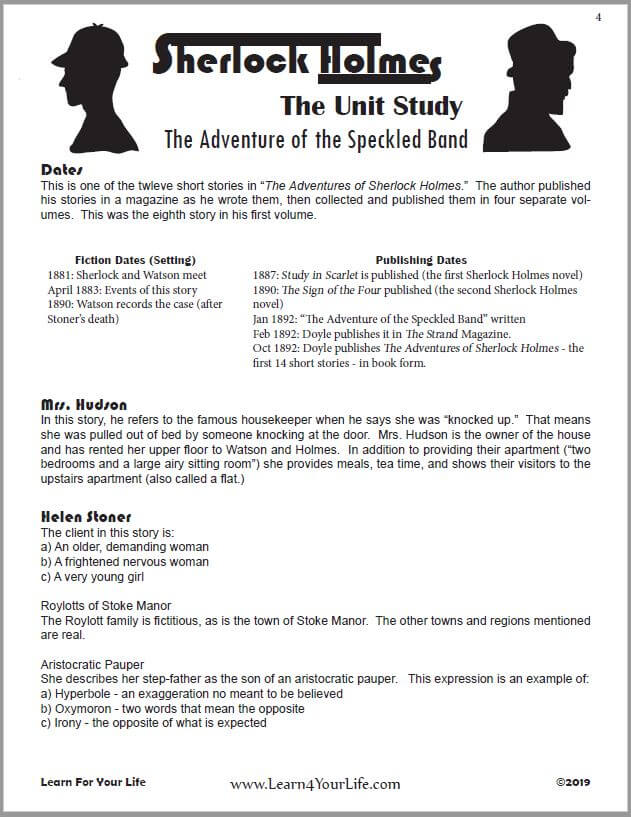
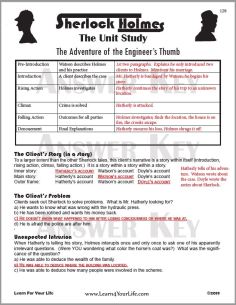
Student Guide AND Teacher's Answer Key Included
$2.99 Download - 183 pages
Eight of the most popular tales demonstrate how to investigate a detective story.
![]()
Sherlock Holmes Pages
A catalog of our pages on Sherlock Holmes.

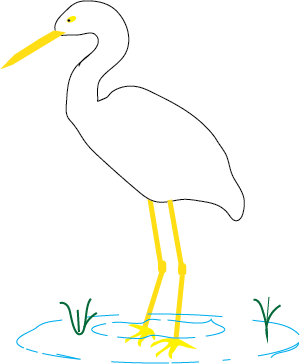
About Our Site
Hands-On Learning


